INTRODUCTION
The report focuses on external factors of Land Rover. An overview of the company is presented and the strategies adopted by the company are discussed. Analysis of the company's macro environmental factors is done by PESTLE analysis and Porter's Five Force analysis. The competitors of the quoted firm are assessed and its industrial life cycle is evaluated. Also, the suitability, acceptability and feasibility of the company's strategy are evaluated. Though the cited firm has become a global leading brand in automotive it faces some issues and amendments which are recommended in the report.
OVERVIEW
Automotive sector has gained much popularity since 21st century. Land rover with the trending technology and advancement has emerged out as the leading brand. The company specialises in four wheeler drive vehicles. Founded in 1948 and owned by British multinational car manufacturer Jaguar land Rover. Since 2008, it is owned by the Tata Motors. It is headquartered in UK. It turned into a brand encompassing range of models including Rover Sport, Defender, Freelander, Range Rover etc. With around 25000 -26000 employees, the company had spread out its business across 178 countries and 5 manufacturing sites (Bosch, Hamersma and Els, 2016). It has become the highest exporter in UK as 80% of its vehicles manufactured are sold abroad. The company possesses rapid growth and changes.
EXTERNAL ANALYSIS OF LAND ROVER ORGANISATION
PESTLE Analysis
Political Factors- Due to government opposition the manufacturing plant of Land Rover was shifted from Singur to Sanand. It is because their governmental bodies thought that industries were harming people rather than helping by taking off their lands but now acts have been implemented there for industrialisation and for farmer’s safety.
Economic Factors-The economic factors affecting the cited company are fluctuations in demands, oil supply, competitive landscape, financial market's regulation and functionality, changes in price of raw materials, specific by laws in each country like consumer rights etc.
Social Factors- In business activities, Land Rover is always responsible and ethical. Their social activities include promotion and improvement of education standards, scholarships etc. In Thailand, they have donated sun-filter shades, life-vests etc. They have also collaborated with training institutes for skill development in youth.
Technological Factors- They have set-upped a research and development centre in UK to provide engine enhancement and support. They have also made an agreement with EngageNext to fasten the advancement process and streamlining the activities.
Environmental Factors- The elected company has developed treatment facilities to avoid release of polluted water in the environment and also it has introduced hybrid car which is powered by air and emission free.
Legal Factors- Strikes and shut-downs are common in the automotive industries like Land Rover and its owed company named Tata Motors have also faced the protest by ITI trainees to increase their wages and other benefits.
Five Forces Analysis
Threat of new entrants- Land rover carries a brand image so it does not have major threat from the new entrants (Mukherjee, 2016). Its maintenance cost so other companies can take advantage of it.
Bargaining power of Buyers- While buying a car, the customer always think of maintenance cost which is high for Land Rover and it is affordable only by few customers. To increase market share, the quoted enterprise should reduce its maintenance cost.
Bargaining power of Suppliers- There are limited number of suppliers because the elected company is a luxury brand. Until now, there is no complaint which has been received by the suppliers (Chapman, 2014).
Threat of substitutes- Due to high cost and high maintenance cost, customers are looking for its substitutes like BMW, Porche and Mercedes etc.
Rivalry- Cars have become a necessity for customers today. This has given rise to many other companies to enter in the industry. They have made solutions to gain market share. Thus, Land Rover is evident to have many rivalries in the market.
Also Read: Strategic Management Case Study on Rodger’s Limited
Competitors
Land Rover has established as leading brand and it faces tough competition from other luxury car brands. Due to high maintenance cost, other companies are conquering the market by offering less maintenance cost. Companies like Chevrolet, Honda, Toyota, Skoda, Fiat etc are the major competitors in the small sector. In medium sector Audi, BMW, Volkswagen, Mercedes etc are trying to muscle their brand (Mutum, Roy and Kipnis, 2014). In luxury sector, Bentley, Rolls Royce, Mercedes S-Classes, BMW 7 series and Audi A7 are giving big competition to the Land Rover. Also, there are many companies offering better reliability and quality in terms of loyalty and equity. Hence, the company needs to work on its weaker sections to increase their market shares and profit.
Industrial Life Cycle
Land Rover has established its reputation in designing all the terrain vehicles. Initially, the design of the vehicles were basic but the concepts and innovations grew with the time.. Invention of luxury SUV's with trending technology and design with excellent and rugged performance off road has boosted up the shares (Johnston, 2016). They have a vision for sustainability. They follow 360 degree approach aiming for the safe environmental practices right from design to the end. It works on two principles: environment innovations and CSR's. They have seven phases of the life cycle: product design, raw material manufacture, transportation to factories and customers, usage by customers and end of life of the product.
EVALUATION OF STRATEGIES OF THE ORGANISATION
The quoted company has adopted many new strategies which are suitable to meet the customer demand. These includes development of tighter fuel economy regulations and more safety features. The firm has focused on developing new city segment cars which will differ in speed and scope on the basis of cities also intelligent technology is connected in the models. The PESTLE analysis shows that company needs to focus more on benefits of the employees and to keep the promises to the public. The shift of headquarter to Sanand was because the company violated the benefits of farmers and harmed them (Mithas and Arora, 2015). The company has successfully managed to develop models of the latest technologies and designs. The economic scenario has matched with the GDP growth rate around 7%. Also, it always keeps in mind the environmental factors.
Sensitivity analysis of the elected company shows that the collected data is insensitive to the external changes. The stable data would benefit the automotive in its new ventures. The total shareholder return(TSR) of the cited company has seen many ups and downs. The TSR declined due to the fall of global financial sector which resulted in decrease in access to credit and rise in fuel prices. The rise in price of rubber and steel also added to it (Uhlemann, 2017). The acquisition of Jaguar Land Rover was another factor that hurt the company. But overall it can be concluded that the elected firm has always been fair to its shareholders.
The financial feasibility of the quoted company has grown in recent years. Continue growth in revenue from 2011 has been noticed. The market share value in UK between 2014 and 2016 has raised. Also, India and China are expected to become significant pillars of growth. It has undertaken many integrated resources to improve the performance. The main problem faced by the company is the lack of skilled engineers for manufacturing (Moon and et. al., 2014). However, it has practised the best skill development by traineeships, initiatives on improving the skills of current employees. It has managed to maintain brand reputation but failed in gaining public loyalty.
RECOMMENDATIONS
Inspite of establishing itself as a leading brand the cited firm faces complaints from the customer regarding the reliability of the product. The customers are facing a lot of problems in the maintenance of the car. I would recommend the company to reduce its maintenance cost after warranty. Also, the company should set up its new plants in regions of Ural, Russia etc as it will get good and educated labour and opportunities for effective logistics. It would help the firm to large customers. The set up of plants in regions of China would help the company to spread its market in the Asian continents. It should focus on long term effect of environment and social sustainability and also on R&D resources to persist in current market. Proper research about the customer desires should be done prior falling in the E-business.
CONCLUSION
The analysis of the report shows that Land Rover has successfully established itself as a leading brand in the global market and has maintained the brand reputation throughout the years. Business strategies and external factors shows that the company needs to work on the aspect of customer loyalty and reliability. The cited company is given tough competition by other companies by enhancement of its weaknesses. A reduced maintenance cost can add to the global share of the company. It has managed to cope up with the social and environmental activities and gain public faith. Some recommendations provided in the report would help the company to attract more customers and improve the quality and reliability.
REFERENCES
- Bosch, H. R. B., Hamersma, H. A. and Els, P. S., 2016. Parameterisation, validation and implementation of an all-terrain SUV FTire tyre model. Journal of Terramechanics.
- Johnston, M., 2016. Brand, image and reality: A guide for small and medium-sized businesses. The Marketing Review.
- Mithas, S. and Arora, R., 2015. Lessons from Tata's Corporate Innovation Strategy. IT Professional.
- Moon, H. C. and et. al., 2014. Extending Porter’s generic strategies: from three to eight. European Journal of International Management.
- Morden, T., 2016. Principles of strategic management. Routledge.
- Mukherjee, D., 2016. Case analysis: Tata Motors' acquisition of Jaguar Land Rover. The Business & Management Review.
- Mutum, D.S., Roy, S.K. and Kipnis, E., 2014. Marketing cases from emerging markets. Springer.
- Pathak, A. A. and Pathak, A. A., 2016. Tata Motors’ successful cross-border acquisition of Jaguar Land Rover: key take-aways. Strategic Direction.
- Trivedi, S. K. and Griffin, J. J., 2013. Rothaermel’s Strategic Management: Concepts and Cases. Journal of Business Ethics Education.
- Uhlemann, E., 2017. Initial Steps Toward a Cellular Vehicle-to-Everything Standard [Connected Vehicles]. IEEE Vehicular Technology Magazine.

























